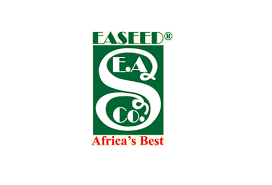Tony's A to Z of growing watermelon (reviewed on April 10, 2023)
I am a melon farmer based in Uganda, East Africa. I am going to share with you my lived experience of growing watermelon, in 5 minutes!
Watermelon is one of the sweetest fruits in the same family as pumpkins and cucumber. They are very vigorous growing plants that mature from 65 days to 90 days depending on the variety. In Uganda, the fruits from hybrid seeds range from 7 to 14 kgs.
Guinness World Records says the world's heaviest watermelon was grown by Lloyd Bright of Arkadelphia, Arkansas, in 2005. It weighed 268.8 lbs. (122 kg), according to Jessie Szalay
Every time people come to me showing interest to grow watermelon, they are all thinking about finding a suitable swampy area to launch the life-changing production. But I tell you, reader, just because watermelon has great water content does not mean it grows in water the plant does not grow in water-logged areas. For watermelon originated from South Africa's Kalahari desert.
Well, the soil requirement for watermelon is simply sandy loam with good drainage. Swamps and water-logged areas do not favor melon growth.
 Watermelon does well even under rain-fed farming. If you receive heavy downpours at least once a week, you can be sure to get some good harvest, too! However, during the fruiting season, the water requirement for the plant goes up. Having irrigation pumps will greatly help in this situation in case of areas with very scanty rainfall. The Solar water irrigation pumps are cheaply available with SolarNow (Check out). Though a little risky, in normal rainy seasons, relying on rainfall will still work for watermelon production.
Watermelon does well even under rain-fed farming. If you receive heavy downpours at least once a week, you can be sure to get some good harvest, too! However, during the fruiting season, the water requirement for the plant goes up. Having irrigation pumps will greatly help in this situation in case of areas with very scanty rainfall. The Solar water irrigation pumps are cheaply available with SolarNow (Check out). Though a little risky, in normal rainy seasons, relying on rainfall will still work for watermelon production.Let us talk about Varieties.
There are several varieties of watermelon in Uganda produced by different seed companies but as a farmer, I recommend Sukari F1 from East African Seeds, the best with a higher yield per acre and relatively better disease resistance!
Sukari F1 can yield as high as 30 tons of melon per acre. Others are Jubaili seeds, and Jaz F1, among others. They can be found in most agro-input shops across the country at varying sizes and prices -from around Shs50,000 for seeds in small tins to over Shs300,000 for seeds in big tins.
Before I forget, you should always go for hybrid seeds, they are a little expensive to buy but will generate a great smile on your face during harvest as the yields are 5 to 10 times higher.
And now, the real process of production

Land clearing
In case you have trees in the garden, cut them down. Watermelons need direct sunlight for some good hours daily, meaning they will not grow well under shade. Last year, I lost a lot of money for refusing to cut down trees in the garden, you can avoid my mistake. The next thing is to clear the bushes.
Plowing
Successful land clearing will ease this step, the purpose here is to loosen up the soil for better drainage. This can be done using tractors, ox-plow, or even the usual hand hoes.
Making raised beds
The raised beds keep heat which watermelon craves to grow well. It also eases the protection of vines as you spray, and easy harvesting. For those using irrigation, it is good to make the raised beds flat atop. The beds should be 1.5 to 2 meters wide leaving a pathway.
The spacing between rows should be 2m and between plants should be 1m
Planting
You can add DAP fertilizer in the hole 15cm (about the length of a mathematical set ruler) deep and 15cm wide then cover with soil before planting. Place 1 or 2 seeds on the surface of each hole at different points, then push them with your finger at 1.5 cm depth. Then cover with a little soil. If you sow the seedlings very deep, they might not germinate.
Management
 Farming is just like any other job or business. Absenting yourself for more than 2 weeks may amount to a big loss. Watermelon requires a lot of care, it is susceptible to several pests and disease attacks. You always need to monitor your garden at least once a week. Even the workers you employ can get jealous, they understand the value of what they are working in (they know watermelon brings a lot of money), and perhaps your payment to them per month or labor session is very low or unsatisfying as it happens in any natural world. With your serial absenteeism, these casual workers on the farm can or may harm your plants with high doses of pesticides or fertilizers that may burn the plants (investment). They can even plot to steal the fruits so your periodic visits and presence in the farm can break a number of those bad intentions.
Farming is just like any other job or business. Absenting yourself for more than 2 weeks may amount to a big loss. Watermelon requires a lot of care, it is susceptible to several pests and disease attacks. You always need to monitor your garden at least once a week. Even the workers you employ can get jealous, they understand the value of what they are working in (they know watermelon brings a lot of money), and perhaps your payment to them per month or labor session is very low or unsatisfying as it happens in any natural world. With your serial absenteeism, these casual workers on the farm can or may harm your plants with high doses of pesticides or fertilizers that may burn the plants (investment). They can even plot to steal the fruits so your periodic visits and presence in the farm can break a number of those bad intentions.In management, be sure to do the following; mulching, watering, weeding, spraying, insecticide application, fertilizer application, and placement of traps for fruit flies.
 Harvest and Marketing
Harvest and MarketingWatermelons normally start flowering at 6 weeks and by the 10th week, you can start harvesting your fruits. Harvest only mature fruits, you can tell if it's mature if it changes color at the bottom by becoming creamy white and if it produces a bam sound when hit in the sides. Harvest the fruit with its stalk to extend its shelf life. There are always ready markets for watermelon especially for Kenya market suppliers for Ugandan farmers. There are also great local markets for the melon in urban areas, however, be keen not to sell on credit. Selling from the farm is the most convenient but you get more money when you reach your urban markets.
In an acre, over 4000 fruits can be produced. The farm prices in Uganda for watermelon (good size) swing around 3,000/= and this translates to (4000X3000) = 12,000,000. Twelve million Uganda shillings can be got from an acre of well-managed watermelon garden.
The writer is an experienced farmer, writer, and representative of YPARD

















